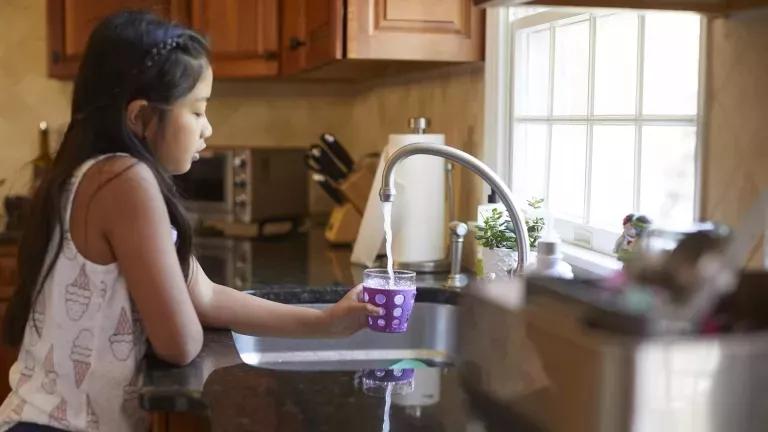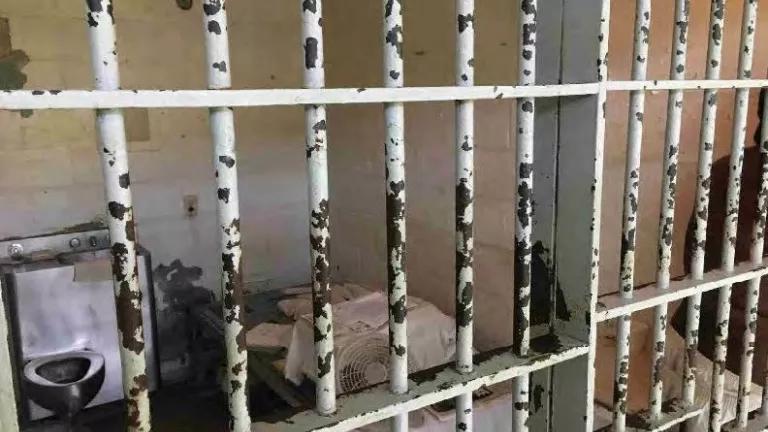What DC Water's Boil Advisory Fumble Teaches Us About Lead
DC Water put customers at risk. Safeguards being considered by the EPA for the new Lead and Copper Rule could help—if the agency gets it right.

Margaret Barse/ACES
Washington, D.C. is somewhat notoriously afraid of snow and cold, but when the extreme cold impacts its drinking water system (which is still full of lead pipes), it is legitimately frightening.
On January 19, 2024, DC Water issued a boil water advisory, but it did not incorporate community feedback about how to make the advisory easier to understand, did not secure adequate publicity, and distributed conflicting maps of the areas affected by the advisory because its GIS (geographic information system, mapping method) faltered. Not only is there a possibility that many residents did not learn that their health might be at risk from microbial contamination because they did not receive or understand the boil water notice, but they also may have been put at risk because the event could have exposed residents to elevated lead in their water. Safeguards being considered by the U.S. Environmental Protection Agency (EPA) could help if the agency gets it right.
This example from DC Water shows us that only strong legal requirements will force it into action.
DC Water did the right thing by issuing a boil water advisory when customers experienced a loss of water pressure; however, there are still problems with the advisory. DC Water has yet to announce the cause of the pressure loss, but it can happen when pipes in the system burst or crack in extreme weather or for other reasons (like human error). Adequate pressure keeps unwanted stuff out, so when it drops, water distribution pipes are vulnerable to intrusion by germs from the outside. Utilities must advise customers to sanitize by boiling. It’s the right thing to do until tests can verify that the water is uncontaminated, which is what happened here.
However, there are risks to an inadequate boil water advisory, especially in a system that has tens of thousands of lead pipes. Some risks are that (1) DC Water’s communication fails to reach vulnerable customers;, (2) customers do not properly flush their pipes when it’s over; and (3) customers with pre-existing lead contamination may actually increase their lead exposure by boiling. In addition, due to a legislative loophole, DC Water can use this as an excuse to install dangerous partial lead service lines, further increasing customers’ exposure to lead.
Improving outreach and communication
Advocates have been in discussions with DC Water about improving these notices for years. This past summer, the utility agreed to incorporate recommendations but forgot to do so in this latest set of announcements. However, these changes should have been made long ago. In 2018, when I was a Neighborhood Commissioner in D.C. and my district was subject to a similar notice, I found in walking door-to-door in my neighborhood that many residents were unaware of the issue, some because of language barriers about the boil water advisory. As members of DC Water’s inaugural Stakeholder Alliance, which brought together citizens and other stakeholders from all eight wards, we made many recommendations to the utility to improve outreach, but it seems few steps have been taken.
Fixing inaccurate maps
Utilities must maintain adequate and well-functioning data systems. In this latest incident, the utility sent out maps that conflicted with one another and experienced a GIS (mapping data) outage in the middle of the advisory. This left residents without the ability to check their individual addresses for several hours at the beginning of the incident. This is troubling as a one-off, but it is more concerning because it is part of a pattern of inadequate safety communications and other fumbles during advisories.
Boiling water advisories can increase lead intake
Boiling water is a necessary step if there is possible bacterial/pathogen contamination, but when homes have lead service lines or internal lead plumbing, boiling can actually cause the dangerous neurotoxin to concentrate in the water. This happens because some of the water evaporates, but the heavy metals stay behind and can find their way into a drinking glass or cooking water. In addition, when there is a boil water advisory, sometimes people use less water, letting the water sit in the pipes for long periods of time. This can cause water sitting in contact with lead pipes to absorb more of the dangerous metal. The utility advises residents to address this by flushing their system after the advisory is over, but there is little reason to believe that many people would be aware of and follow that suggestion without better communications.
The D.C. partial lead pipe loophole
In 2019, a new law went into effect that finally stopped DC Water from engaging in the dangerous practice of partial lead service line replacement in most instances. When customers couldn’t pay (sometimes thousands of dollars) on short notice DC Water’s historical practice was to only replace the pipe to the property line. To do this, they would fuse the new copper pipe to the old lead one; this was shown in research by the Centers for Disease Control and Prevention to cause more lead exposure than even a full lead line. The disturbance to the pipe from the construction shakes up lead flakes and causes an electrochemical reaction, an interaction from the two metals fusing together that causes long-term leaching at the joint. However, right up until practically the day that the new law went into effect, DC Water continued to use this practice frequently. Since then, it has taken advantage of a loophole that allows it to do partial lead pipe replacements in “emergency” circumstances. From 2019 to 2023, DC Water has added 190 partial lead pipes to the system, largely through this loophole. To make matters worse, we only know about this because advocates were forced to go to D.C. Council to ask for a law requiring the utility to disclose this information (and DC Water opposed that law as well).
It is not yet known whether DC Water had to conduct any emergency repairs that resulted in partial lead lines from this latest incident. However, the type of events that can lead to a boil water advisory (such as a main break) also often come with emergency construction and line replacement. Construction itself can shake up lead pipes, causing exposure. Only fully removing the lead pipes from our system can take care of these risks.
Why do the EPA’s proposed updates to the Lead and Copper Rule matter here?
As my colleague Erik Olson writes, there are a number of provisions in the updates to the EPA’s Lead and Copper Rule, the regulations that are supposed to protect us from lead in water, that need to be improved to ensure that we are safe. The EPA is considering—or needs to consider—several improvements to this rule to ensure that it finally takes care of our nation’s lead pipe problem. There are things to celebrate and things that need to change that relate to this advisory in D.C. Specifically:
- We must retain the 10-year time limit on replacing service lines, and we need to ensure that it doesn’t contain any overbroad loopholes. In D.C., we have seen how squishy deadlines have resulted in tens of thousands of lead lines remaining in the ground for 20 years after the broke in the early 2000s.
- The EPA must require utilities to pay for the full cost of full lead line replacement. Again, here in D.C., we have seen how loopholes and pushing off costs onto consumers led to inequitable outcomes because low-income customers (disproportionately BIPOC residents) could not afford to pay for the work and so their lead pipes stayed in the ground.
- The EPA must also implement better public education and communication requirements.
We have a unique moment here, now that the EPA is trying to remedy the lead in drinking water crisis. One way you can make your voice heard is to sign onto a comment telling the EPA to finalize strong standards for drinking water. The comment deadline is February 5, 2024.
Millions of Americans drink tap water served by toxic lead pipes.
Tell the EPA we need safe drinking water!

Tell the EPA we need safe drinking water!
There is no safe level of lead exposure. But millions of old lead pipes contaminate drinking water in homes in every state across the country. We need the EPA to do its part to replace lead pipes equitably and quickly.






